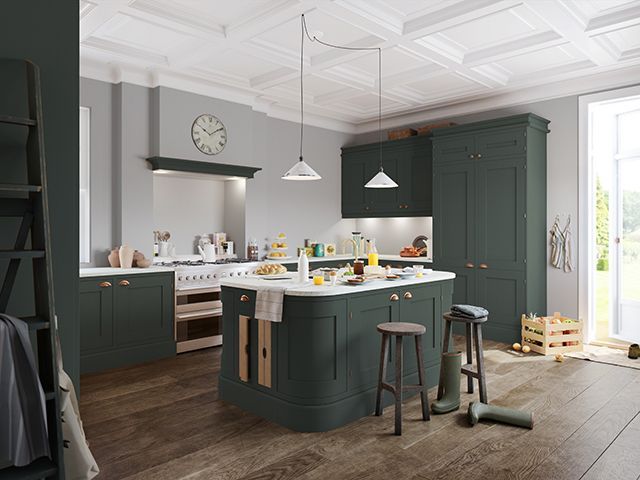
Kitchen planning guide: how to set a budget
Before you get to work on your new kitchen, set the budget and make time to factor in all your expenditure for the renovation.
Image: Dorchester kitchen in Antique Green, Optiplan Kitchens
While the kitchen may be the hub of family life in the home, it’s also one of the most expensive spaces to renovate.
However, getting to grips with your budget is the first step in a successful new kitchen project, and if you’re smart with your finances, you may be able to make your money go much further.
Financing options
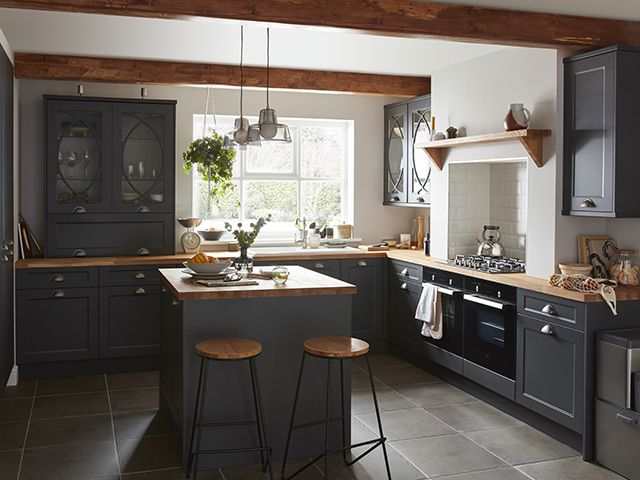
Image: Artemisia Shaker kitchen in Matt Graphite, B&Q
With many kitchen retailers offering finance schemes, it’s never been easier to get a new kitchen on credit. However, you should still shop around for beneficial rates – a generic loan may offer a better deal than your retailer of choice.
If you have the funds to pay for your kitchen outright, and won’t be penalised by accessing them, then this is always the preferred option. However, avoid paying cash directly – always make purchases on a credit card and then pay these off, as these payments will come with protection should your builders or suppliers go out of business. Use a 0% credit card wherever possible.
Another option is to investigate whether your mortgage lender may be able to lend you money based on your home. However, this can complicate your mortgage deal, so investigate other outlets first.
Adding value to your property
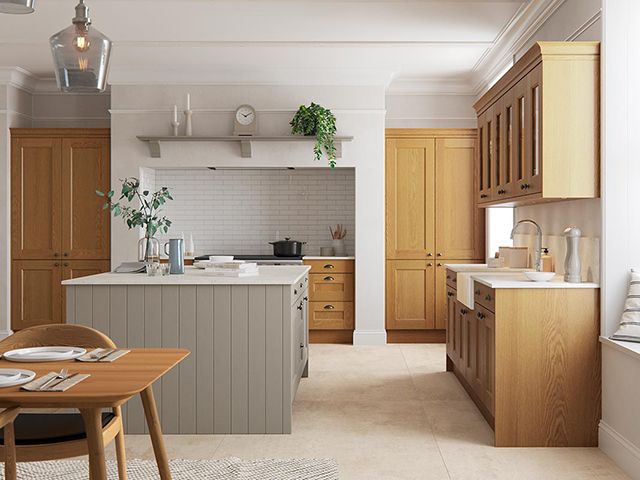
Image: Solva Shaker kitchen, Masterclass Kitchens
Though not all renovations are driven by adding value, especially if you’re living in your forever home or need special adaptations made, it’s a good way to set a realistic budget for your project.
After all, there may be a discrepancy between what you can afford to spend and what you should spend. If you pour too much money into a renovation project in your home, you may find that you overcapitalise and cannot reap the rewards in adding as much value to your property.
Talk to an estate agent and enquire how much the proposed project could add to your house value – this will give you a rough guide to work to, though Zoopla estimates that a decent kitchen could add up to 5% to your house value. You should only spend up to the amount the project could increase your property value, but any less and the difference is profit in your pocket when you come to sell.
Break down the project
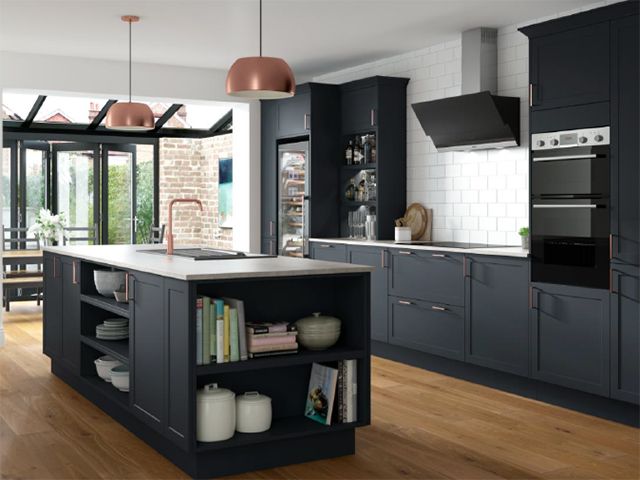
Image: Cambridge kitchen in Midnight Blue, Benchmarx Kitchens
At the start of the project, write a list of everything you’ll need to spend money on, ranked from most important to least. As you work through these purchases, you can start to attribute what percentage of the budget you can spend on each area, adjusting where you need to ensuring the most important elements are covered before the finer details.
Cabinets:
Appliances:
Labour:
Windows/doors:
Work surfaces:
Flooring:
Fixtures & Fittings:
You should also consider that your project may need a contingency fund for any unexpected costs that occur during the process, so that you’re not caught short finishing your renovation. Put aside 20% of your original budget at the start of the project to keep aside for this purpose. If you make it through the project without a hitch, you’ve then also got a reserve of funds for those details further down the list.
Wants versus needs
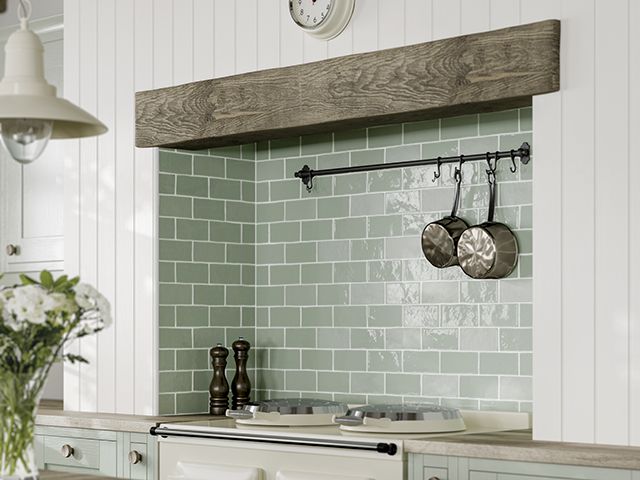
Image: Somerset green tiles, Tile Giant
As a household, think about the purchases you want to make for the space. Labelling as either a want or a need can help to prioritise the most important elements of the design.
Also think about what could potentially be fitted retroactively when further budget allows. Investing the most amount of money into a high-quality, durable and hardwearing kitchen is how to get the most for your money – all the bells and whistles can be added at a later date when budget allows.
Be smart with DIY
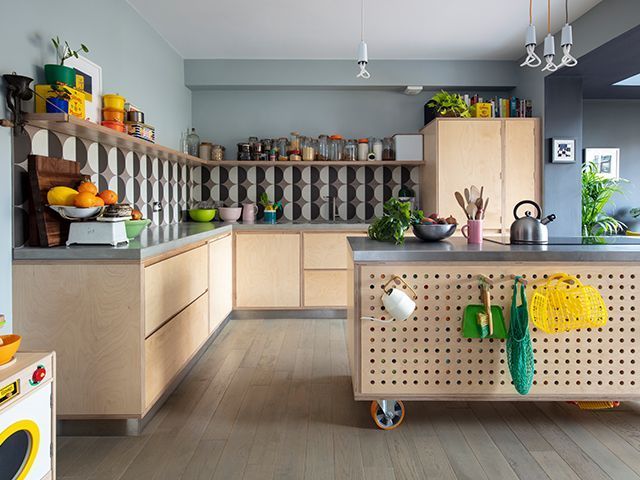
Image: Sustainable Kitchens
With labour making up such a large amount of the budget, you may be tempted to DIY as much as possible. However, unless you’re skilled in the arena you’re wading into, you could actually end up adding significantly to your project cost if things go wrong.
According to True Solicitors, while only 6% of Brits has tried to tile their own kitchen, 25% of those have had to call in a professional to rectify their mistakes, costing as much as £600 as well as the cost of the tiles.
Extra costs during installation
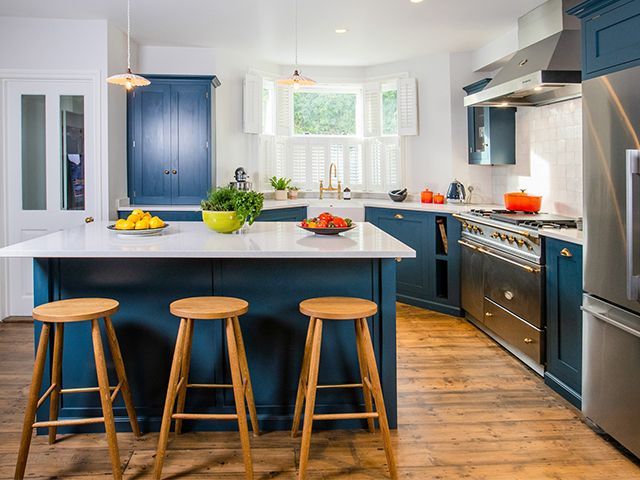
Image: deVOL kitchen with Cosentino worktops. Photo: Bircan Tulga
Even with the best pre-planning in the world, once your build team are on site, there can still be issues that arise that will cost time and money. Whether it’s extra work that needs to be undertaken, or just more tiles or paint that need to be ordered, this is where you’ll be thankful for that contigency you’ve built into your original budget.
Also consider that a kitchen renovation can be a disruptive time – budgeting in a good number of takeaways and meals out during this time is also a must!
Are you planning a new kitchen? Let us know! Tweet us @goodhomesmag or post a comment on our Facebook page. Or, tag us in your own kitchen photos on Instagram, using the hashtag #ThisGoodHome.




